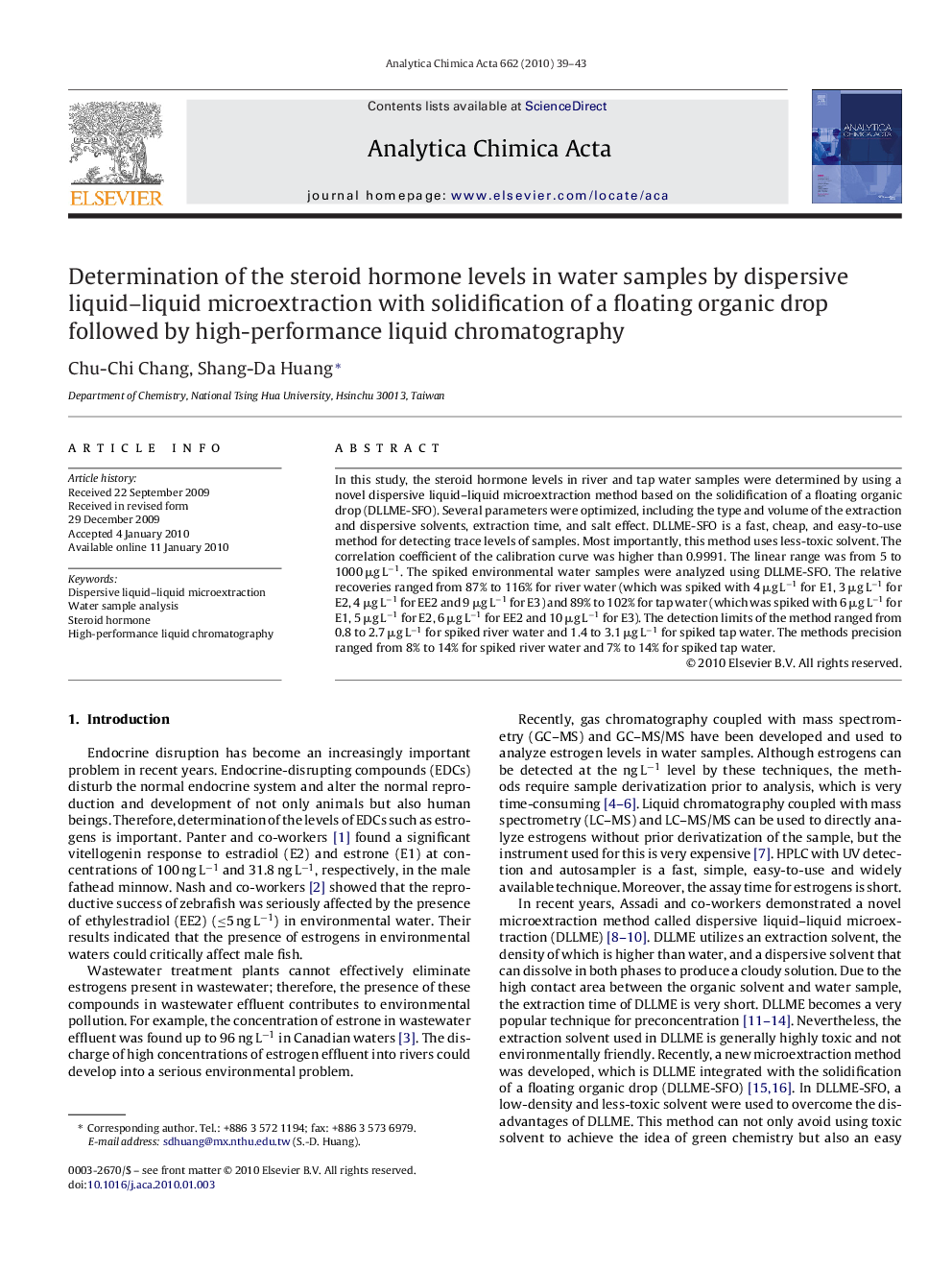| Article ID | Journal | Published Year | Pages | File Type |
|---|---|---|---|---|
| 1168642 | Analytica Chimica Acta | 2010 | 5 Pages |
In this study, the steroid hormone levels in river and tap water samples were determined by using a novel dispersive liquid–liquid microextraction method based on the solidification of a floating organic drop (DLLME-SFO). Several parameters were optimized, including the type and volume of the extraction and dispersive solvents, extraction time, and salt effect. DLLME-SFO is a fast, cheap, and easy-to-use method for detecting trace levels of samples. Most importantly, this method uses less-toxic solvent. The correlation coefficient of the calibration curve was higher than 0.9991. The linear range was from 5 to 1000 μg L−1. The spiked environmental water samples were analyzed using DLLME-SFO. The relative recoveries ranged from 87% to 116% for river water (which was spiked with 4 μg L−1 for E1, 3 μg L−1 for E2, 4 μg L−1 for EE2 and 9 μg L−1 for E3) and 89% to 102% for tap water (which was spiked with 6 μg L−1 for E1, 5 μg L−1 for E2, 6 μg L−1 for EE2 and 10 μg L−1 for E3). The detection limits of the method ranged from 0.8 to 2.7 μg L−1 for spiked river water and 1.4 to 3.1 μg L−1 for spiked tap water. The methods precision ranged from 8% to 14% for spiked river water and 7% to 14% for spiked tap water.
